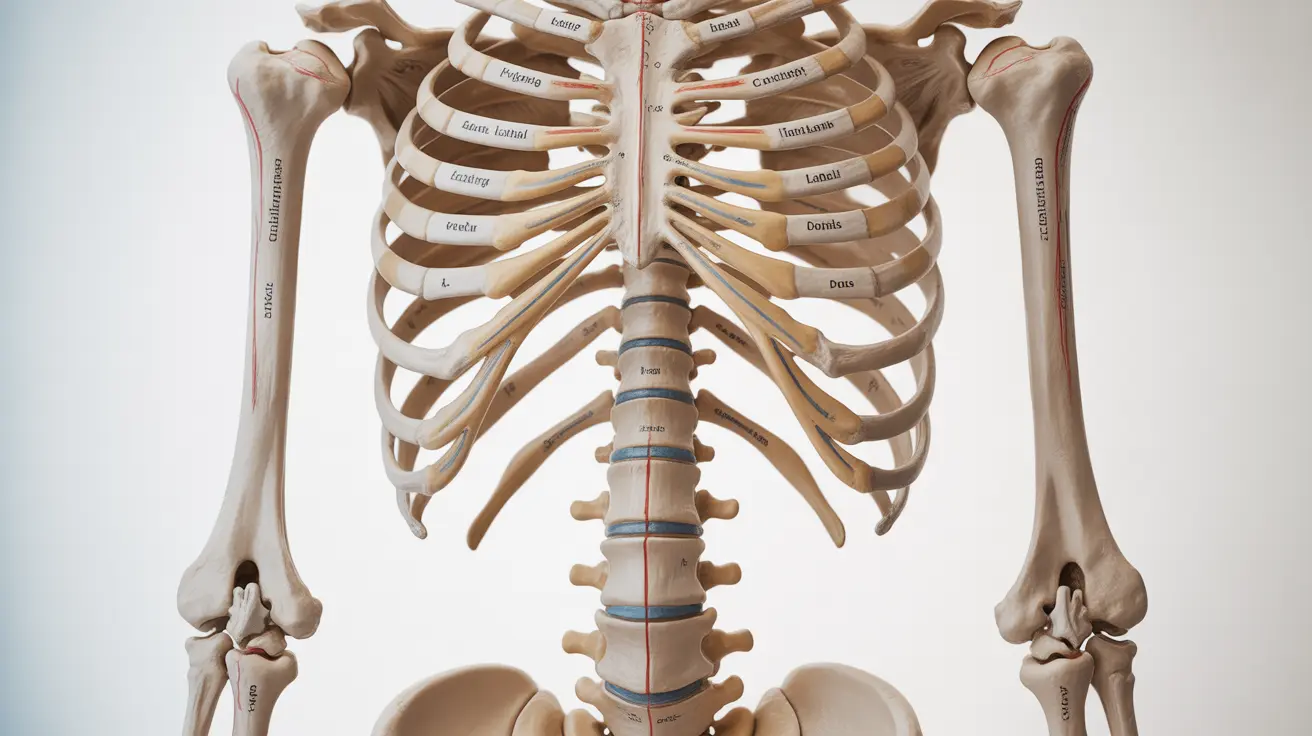The skeletal system is a remarkable framework that provides structure, protection, and support for your entire body. This complex system consists of bones, cartilage, tendons, and ligaments working together to enable movement, protect vital organs, and maintain overall health. Understanding how your skeletal system functions is crucial for maintaining optimal health and preventing potential problems.
In this comprehensive guide, we'll explore the essential components of the skeletal system, its vital functions, and how to maintain strong, healthy bones throughout your life.
The Foundation of Your Skeletal System
Your skeletal system comprises two main divisions: the axial skeleton and the appendicular skeleton. The axial skeleton includes your skull, vertebral column, and rib cage, while the appendicular skeleton consists of your arms, legs, shoulder girdle, and pelvic girdle. Together, these structures form a dynamic framework that supports your entire body.
Key Components and Their Roles
The skeletal system relies on several crucial components working in harmony:
- Bones: Provide structural support and protect vital organs
- Cartilage: Cushions joints and enables smooth movement
- Tendons: Connect muscles to bones
- Ligaments: Connect bones to other bones at joints
Essential Functions of the Skeletal System
Your skeletal system serves multiple vital purposes beyond simply providing structure:
- Protection of vital organs
- Support for muscles and soft tissues
- Production of blood cells in bone marrow
- Storage of minerals like calcium and phosphorus
- Facilitation of movement through joint function
Maintaining Skeletal Health
Keeping your skeletal system healthy requires attention to several key factors:
Nutrition for Strong Bones
Essential nutrients for bone health include:
- Calcium
- Vitamin D
- Magnesium
- Protein
- Vitamin K
Exercise and Physical Activity
Regular weight-bearing exercises and resistance training help maintain bone density and strength. Activities like walking, jogging, and strength training are particularly beneficial for skeletal health.
Common Skeletal Conditions and Their Prevention
Understanding common skeletal conditions can help you take preventive measures:
- Osteoporosis
- Arthritis
- Scoliosis
- Bone fractures
- Joint disorders
Warning Signs of Skeletal Problems
Be alert to these potential indicators of skeletal issues:
- Persistent joint pain
- Limited range of motion
- Unusual swelling around joints
- Frequent fractures
- Poor posture
Bone Healing and Recovery
When bones are injured, they have a remarkable ability to heal themselves. The healing process typically involves:
- Formation of a blood clot
- Development of new bone tissue
- Remodeling of the bone structure
- Gradual strengthening of the affected area
Frequently Asked Questions
What are the main functions of the skeletal system and how do bones, cartilage, tendons, and ligaments work together?
The skeletal system provides structure, protection for organs, enables movement, produces blood cells, and stores minerals. Bones form the framework, cartilage cushions joints, tendons connect muscles to bones, and ligaments connect bones to other bones, all working together to enable smooth, coordinated movement.
How can I maintain healthy bones and prevent common skeletal problems like osteoporosis?
Maintain bone health through adequate calcium and vitamin D intake, regular weight-bearing exercise, avoiding smoking, limiting alcohol consumption, and maintaining a healthy weight. Regular bone density screenings are also important, especially for those at higher risk of osteoporosis.
What symptoms should I watch for that might indicate a skeletal system condition or injury?
Key warning signs include persistent joint pain, decreased range of motion, unusual swelling, frequent fractures, and changes in posture. Chronic fatigue, bone pain, and muscle weakness can also indicate skeletal system issues.
What is the difference between the axial and appendicular skeleton and what bones do each include?
The axial skeleton includes the skull, vertebral column, and rib cage, focusing on protecting vital organs. The appendicular skeleton comprises the arms, legs, shoulder girdle, and pelvic girdle, primarily responsible for movement and manipulation.
How do bone fractures heal and what treatments are typically used for broken bones?
Bone healing involves inflammation, soft callus formation, hard callus formation, and bone remodeling. Treatments may include immobilization through casting or splinting, surgery for severe fractures, and rehabilitation exercises. The healing process typically takes 6-8 weeks, depending on the fracture severity and location.




